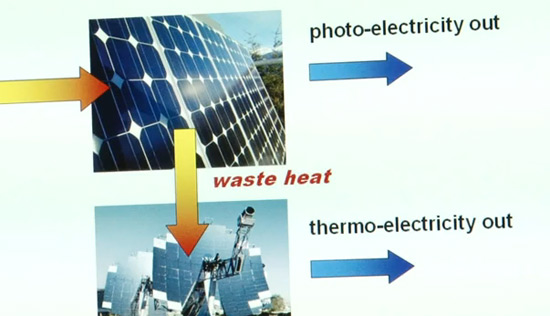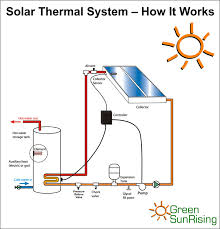photo thermal conversion


Solar thermal energy (STE) is a form of energy and a technology for harnessing solar energy to generate thermal energy or electrical energy for use in industry, and in the residential and commercial sectors. The first installation of solar thermal energy equipment occurred in the Sahara Desert approximately in 1910 and was a steam engine without a kettle and fire but with a mirror system for sun light collection to heat water for the needed steam pressure. Because of the influence of World War I, liquid fuel was better developed and the Sahara project was abandoned, only to be reused several decades later.
Solar thermal collectors are classified by the United States Energy Information Administration as low-, medium-, or high-temperature collectors. Low-temperature collectors are flat plates generally used to heat swimming pools. Medium-temperature collectors are also usually flat plates but are used for heating water or air for residential and commercial use. High-temperature collectors concentrate sunlight using mirrors or lenses and are generally used for fulfilling heat requirements up to 300 deg C / 20 bar pressure in industries, and for electric power production. However, there is a term that used for both the applications. Concentrated Solar Thermal (CST) for fulfilling heat requirements in industries and Concentrated Solar Power (CSP) when the heat collected is used for power generation. CST and CSP are not replaceable in terms of application. The 377 MW Ivanpah Solar Power Facility is the largest solar power plant in the world, located in the Mojave Desert of California. Other large solar thermal plants include the SEGS installation (354 MW), also in the Mojave, as well as the Solnova Solar Power Station (150 MW), the Andasol solar power station (150 MW), and Extresol Solar Power Station (100 MW), all in Spain.